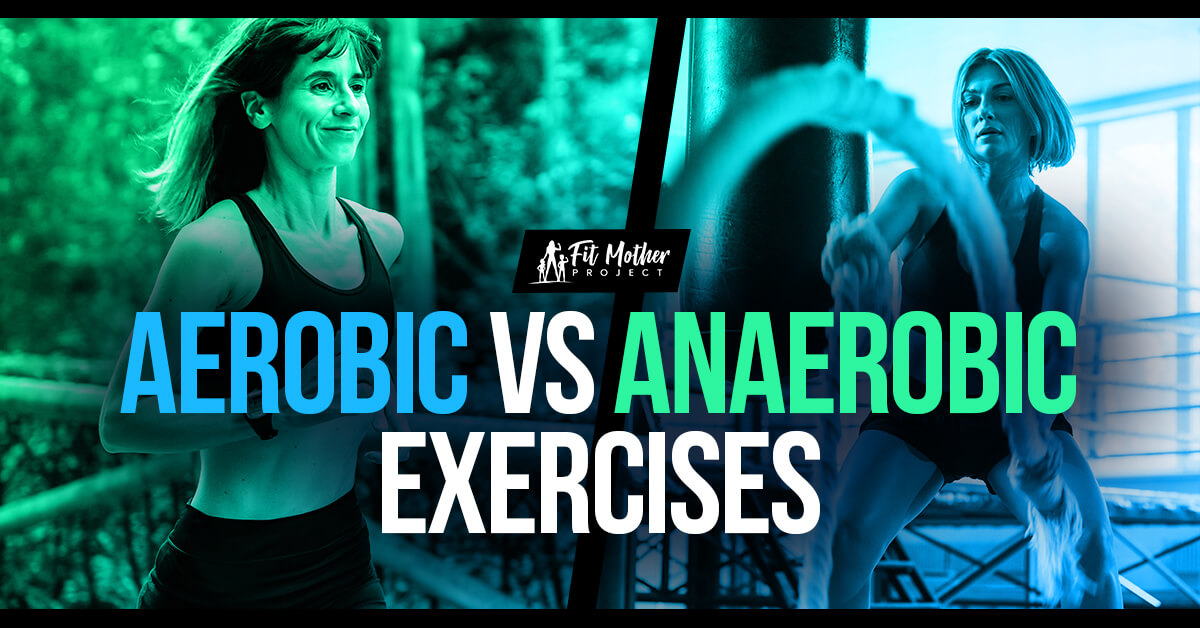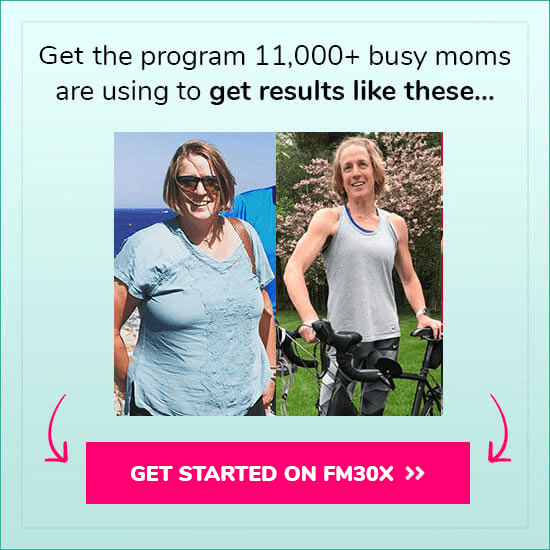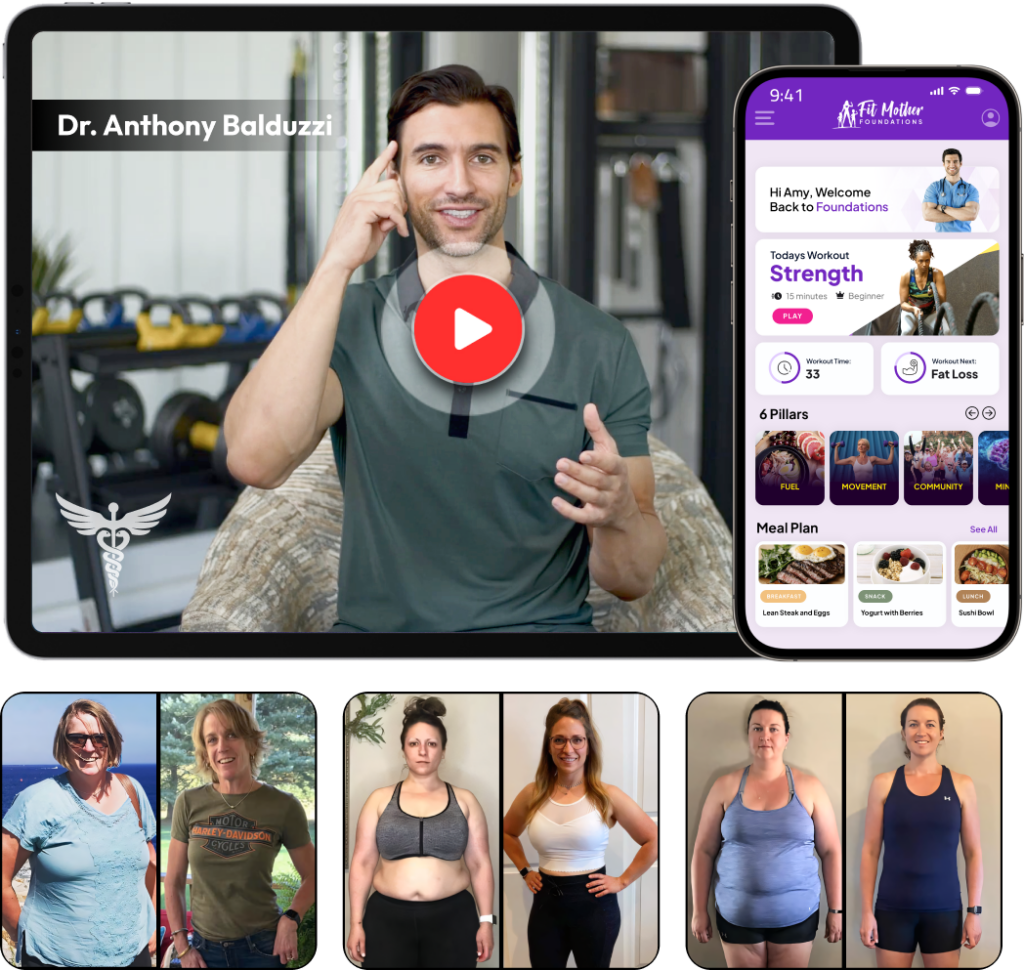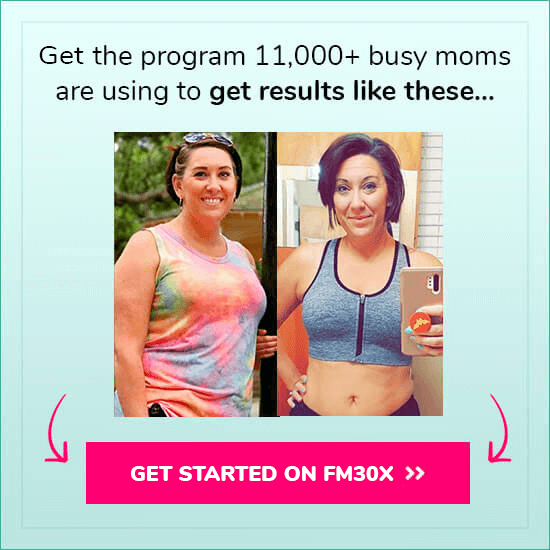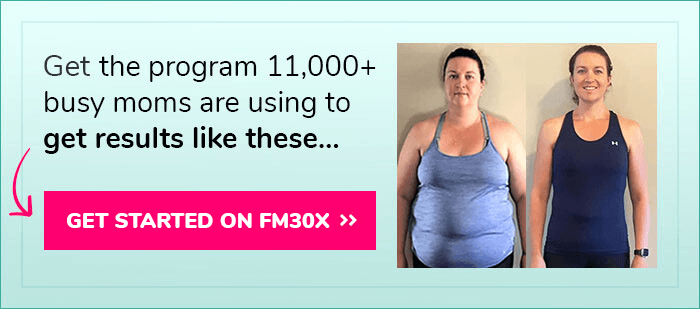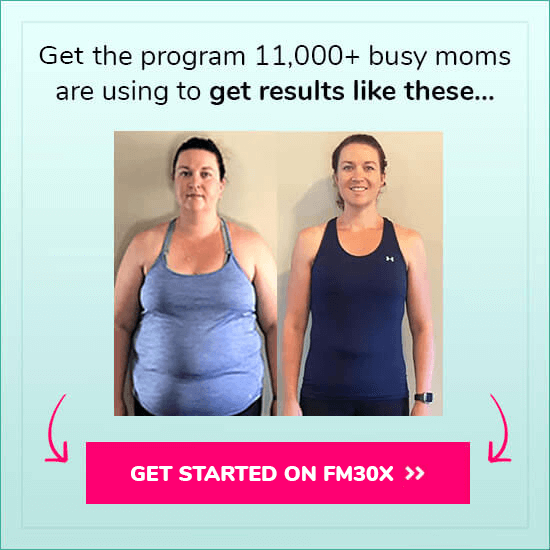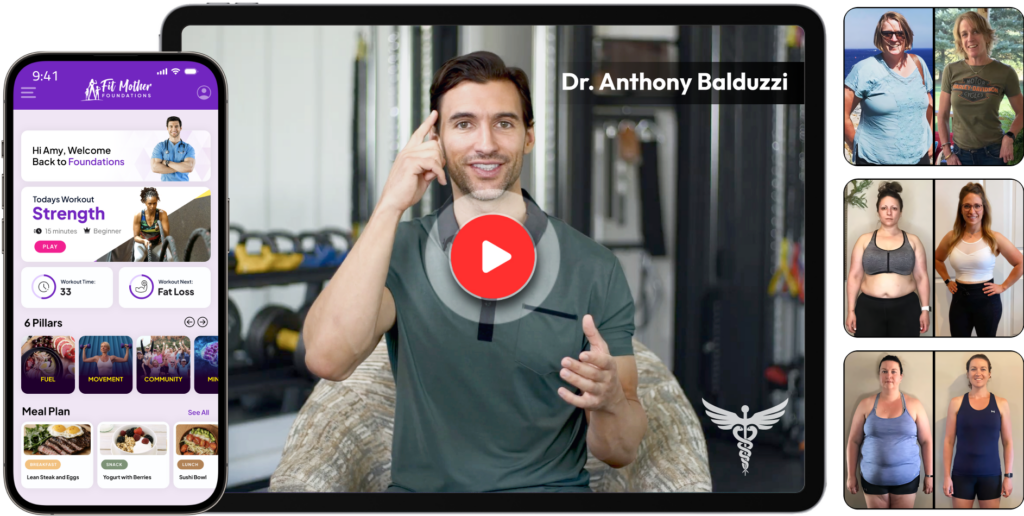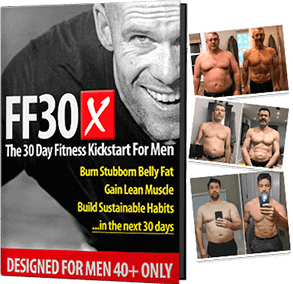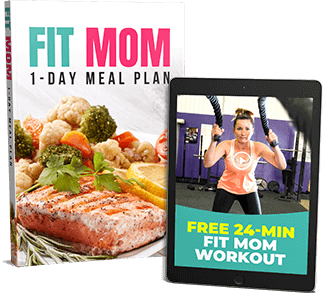There are a lot of different exercises and workouts out there, and it can be hard to figure out what's best for you. Anaerobic vs aerobic exercises: which one is better?
You already know that exercise is good for you, but does the type of exercise you choose make a difference?
The answer is yes!
And the best way to discover what's best for burning fat and toning muscles is by comparing anaerobic vs aerobic exercise.
Which workouts are better for women and why?
Read on to find out!
You can EASILY build muscle as you age by adopting these 10 mindsets!
Anaerobic vs Aerobic Exercise
To compare and contrast anaerobic vs aerobic exercises and know which are best for women, it's essential to understand what each type of workout is.
Anaerobic Exercise
Anaerobic exercise involves intense, short bursts of exercise that don't require extensive increases in oxygen consumption.
Examples of anaerobic exercises include:
- Weightlifting
- Sprinting
- High-intensity interval training (HIIT)
- Bodyweight exercises
- Resistance-band training
- Circuit training
During anaerobic workouts, your body breaks down glucose stores without oxygen, often causing a lactic acid buildup in your muscles.
Aerobic Exercise
Aerobic exercises are endurance workouts that increase your breathing and heart rate. They occur for sustained periods.
Examples of aerobic exercises include:
- Brisk walking
- Jogging
- Running
- Cycling
- Rowing
- Stair climbing
- Elliptical machine workouts
- Swimming
- Dancing
- Hiking
Any exercise that increases your heart rate for extended periods of time is often an aerobic workout.
Such exercises require more oxygen consumption, which increases your breathing and heart rate to boost oxygen in your muscles and the rest of your body.
In just 6-weeks on our FOUNDATIONS Program, you'll transform your health and body, for the rest of your life!Join our 6-Week Program...
You'll Gain Health for Life!
What Are the Benefits of Anaerobic vs Aerobic Exercise?
Both anaerobic and aerobic exercises offer health and wellness benefits, as long as you do them regularly.
Examples of the benefits you can take advantage of when completing both types of workouts include:
- Improved heart health
- Healthy weight management
- Body fat reductions
- Reduced chronic disease risks
- Improved muscle definition
- Stronger heart muscle
- Improved circulation
- Increased metabolism
- Better sleep
- Reduced blood pressure and cholesterol
- Stronger immune system
- Mood improvements
- Stronger muscles and bones
All types of exercise can lower your risk of heart disease, type 2 diabetes, anxiety, depression, dementia, and certain types of cancers.
Anaerobic exercise is particularly useful for burning fat, but prolonged bouts of aerobic workouts also reduce fat by using body fat for fuel in addition to glucose.
One study found that exercising at a moderate intensity for 33 minutes burns just as much fat as shorter bouts of high-intensity interval training (HIIT).
In just 6-weeks on our FOUNDATIONS Program, you'll transform your health and body, for the rest of your life!Join our 6-Week Program...
You'll Gain Health for Life!
What Are Differences Between Anaerobic vs Aerobic Exercise?
The main differences between anaerobic vs aerobic exercise include the duration of exercise, workout intensity, and how your body uses stored energy.
Aerobic exercise tends to be less intense and more prolonged, while anaerobic workouts often consist of shorter, high-intensity energy bursts.
During anaerobic workouts, your body mainly uses glucose as fuel.
Aerobic exercise uses glucose and stored body fat as fuel.
The longer the aerobic workout, the more body fat you'll likely burn.
The best workouts for women are those that contain both anaerobic and aerobic exercises.
That's because each type of workout offers unique benefits for muscle building, fat burning, heart health, and overall health and wellness.
Combine your favorite anaerobic exercises, such as weightlifting, body weight exercises, resistance band training, sprinting, circuit training, or HIIT, with jogging, jumping jacks, swimming, elliptical machine workouts, or rope jumping to enhance muscle toning and fat-burning.
HIIT Workouts
To complete HIIT, warm up for a few minutes, exercise at a high intensity for 30 seconds, recover for 1 minute, and repeat alternating bouts of high- and low-intensity exercises for at least 20 minutes.
You might choose jogging/running, cycling, swimming, elliptical machine workouts, rowing, or similar exercises to complete HIIT workouts.
Circuit Training Exercises
During circuit training, complete each exercise in your circuit for 30 seconds and rest for 10 seconds between exercises, if needed.
Aim to complete 2-4 sets of 10-minute circuits for a total of 20-50 minutes.
Exercises to complete while circuit training include jump squats, jumping jacks, rope jumping, burpees, planks, mountain climbers, bicycle crunches, pushups, alternating jumping lunges, weightlifting, or other fat-burning options.
Mix and match exercises in your circuit based on your preferences and fitness level and change up your routine often.
Continuous Cardiovascular Workouts
Choose continuous cardiovascular exercise a few days of the week to improve your endurance and overall cardiovascular fitness.
Aim to complete at least 30 minutes of continuous, moderate-intensity aerobic exercise on certain days of the week.
You might combine continuous cardio with weighting or bodyweight exercises to further enhance fat-burning, muscle toning, and healthy weight management.
For example, you might jog for 30-45 minutes and do strength-training exercises for 15 minutes during your workout.
Strength Training Exercises
Lifting weights, using resistance bands, or using your own body weight as resistance tones your muscles, burns fat, and increases strength in addition to improving your cardiovascular and overall fitness levels.
Examples of body weight exercises to consider include pushups, sit-ups, crunches, planks, squats, leg raises, lunges, and hand-stand pushups.
Aim to work all major muscle groups, including your legs, glutes, calves, back, shoulders, arms, and chest, at least twice weekly.
You can strength-train your abdominal muscles all or most days of the week to keep your midsection trim.
You might try dumbbell squats or lunges, shoulder press, biceps curls, triceps kickbacks or extensions, bent-over reverse flys, bent-over rows, upright rows, plank rows, plank jacks, or other resistance-training exercises.
Flexibility and Balance Training
In addition to completing anaerobic and aerobic exercises regularly, add in flexibility and balance training to round out your fitness routine and improve musculoskeletal functioning.
Consider yoga, Pilates, or simply complete metabolism-boosting stretches (link to “stretching for weight loss” article) on a regular basis.
Stretching is also a stress-reducer that helps you burn additional calories.
Alternating Workouts
It's best to switch up your workout routine regularly, rather than doing the same exercises day after day.
Combine a healthy mix of anaerobic and aerobic exercises or do both during the same workout session.
Use the Fit Mother Project for the best fat-burning, muscle-toning workouts designed for busy moms!
Doing so enhances muscle definition, prevents boredom and burnout, improves your overall fitness level, and reduces the risk of injuries.
In just 6-weeks on our FOUNDATIONS Program, you'll transform your health and body, for the rest of your life!Join our 6-Week Program...
You'll Gain Health for Life!
How Often Should You Complete Anaerobic vs Aerobic Exercises?
While it's essential to complete both anaerobic and aerobic exercises routinely, different guidelines exist for each type of workout.
The Physical Activity Guidelines for Americans provide the following exercise recommendations for children, teenagers, and adults.
Guidelines for Children and Teenagers
Children and teens aged 6-17 should complete 6o minutes (or more) of physical activity each day.
Most of the 60 minutes should consist of moderate to vigorous intensity aerobic exercise and should include vigorous-intensity at least three days weekly.
Kids and teens should do muscle-strengthening exercises at least three days per week and complete bone-strengthening workouts at least three days weekly.
Muscle- and bone-strengthening exercises count as part of the 60 minutes of physical activity kids and adolescents need daily.
Kids should stay as active as possible all throughout the day, not just during scheduled physical activity.
Playing on a sports team is an excellent way to keep children and teenagers in shape and learn the importance of being a team player.
Guidelines for Adult Men and Women
Adult men and women should move as much as possible throughout the day.
They should complete at least 2 hours and 30 minutes to 5 hours per week of moderate-intensity aerobic exercise, or 75 minutes to 2 hours and 30 minutes of vigorous-intensity aerobic exercise each week (or combinations of the two).
These guidelines are minimums.
Getting more than 5 hours of aerobic physical activity weekly offers additional health benefits, including reduced disease risks and enhanced healthy weight management.
The Physical Activity Guidelines for Americans also recommend adult men and women complete muscle-strengthening exercises of moderate to vigorous intensities, that involve all major muscle groups, at least 2 days weekly.
To determine if the aerobic exercise you choose is moderate or vigorous intensity, use the following guidelines:
Moderate Exercise: moderate aerobic exercise includes gentle bike rides, brisk walks, and other activities that allow you to comfortably talk while doing the activity.
Vigorous Exercise: examples of vigorous aerobic exercise are intense cycling, fast jogging, long-distance running, and other higher-intensity workouts that make it difficult for you to talk during exercise.
Erin Coleman is a registered and licensed dietitian with over 15 years of freelance writing experience. She graduated with her Bachelor of Science degree in nutritional science from the University of Wisconsin-Madison, and completed her dietetic internship at Viterbo University in La Crosse, Wisconsin. Prior to beginning her career in medical content writing, Erin worked as Health Educator for the University of Wisconsin-Madison Department of Internal Medicine. Her published work appears on hundreds of health and fitness websites, and she’s currently working on publishing her first book! Erin is a wife, and a Mom to two beautiful children.
Fit Mother Project is the answer you’ve been looking for. Inside the program, you’ll receive: Our Fit Mother 30X Program (FM30X) is the answer you’ve been looking for. Inside FM30X, you’ll receive: The FOUNDATIONS Program is created by Dr. Anthony Balduzzi for Women 40+ who want Lifelong Health. In just 6-Weeks following FOUNDATIONS, you'll experience: FOUNDATIONS has transformed 60,000 lives! Are you ready to experience true lasting health & results?If you’re a busy mom who wants to finally lose weight,
get healthy, and actually keep the pounds off for good,
this is the simple program you’ll love sticking to…
If you’re a busy mom who wants to finally lose weight,
get healthy, and actually keep the pounds off for good,
this is the simple program you’ll love sticking to…
LEARN MORE ABOUT FM30X »
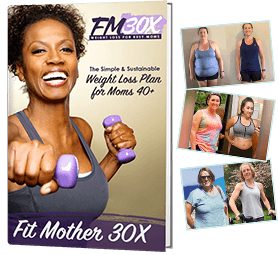
Learn More About FM30X

Join our 6-Week Doctor Designed Health Program.
You'll Gain Foundational Health for the Rest of Life.
*Please know that weight loss results & health changes/improvements vary from individual to individual; you may not achieve similar results. Always consult with your doctor before making health decisions. This is not medical advice – simply very well-researched info on anaerobic vs aerobic exercises.


